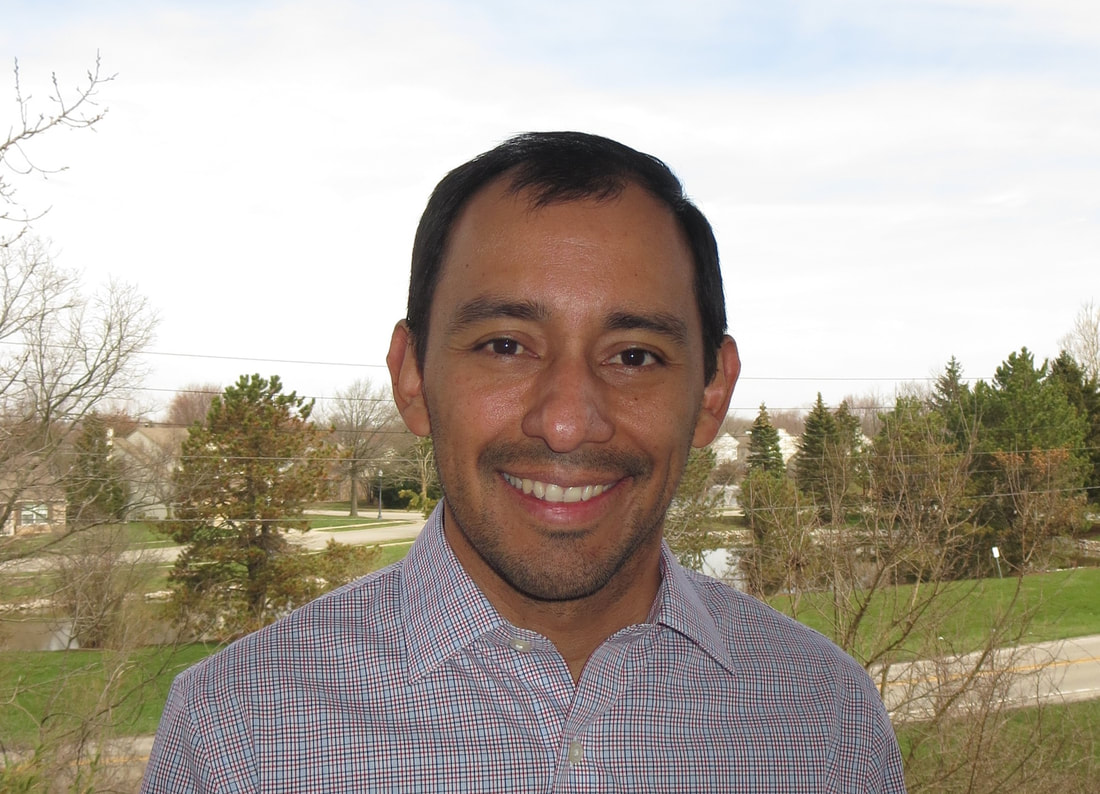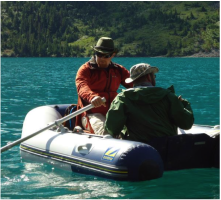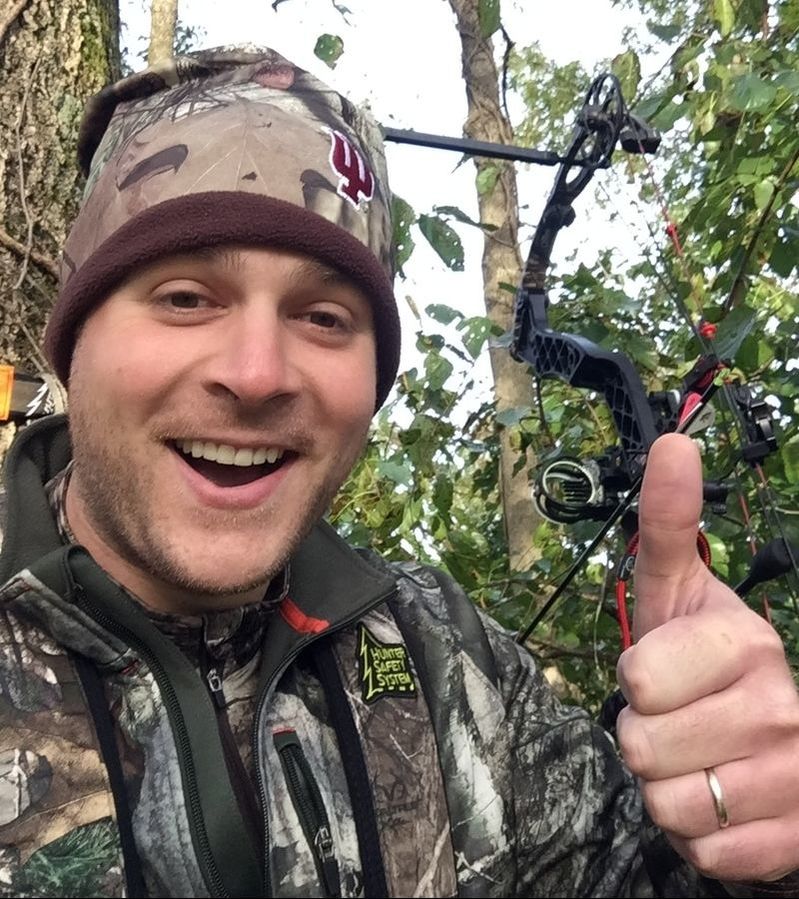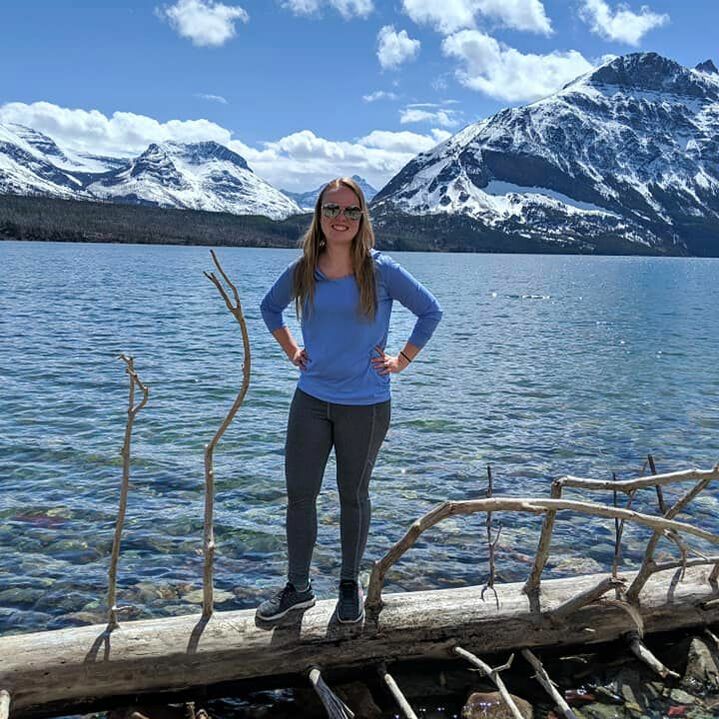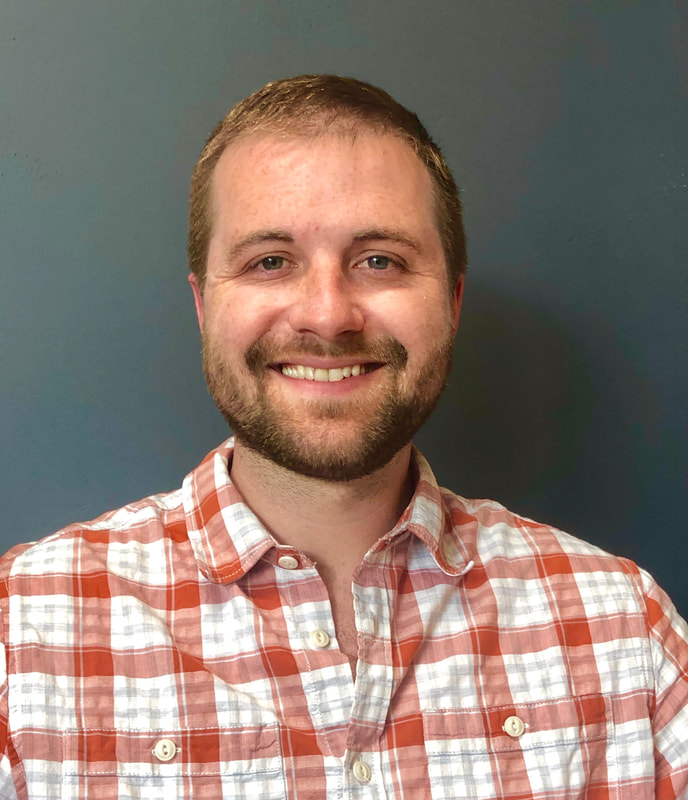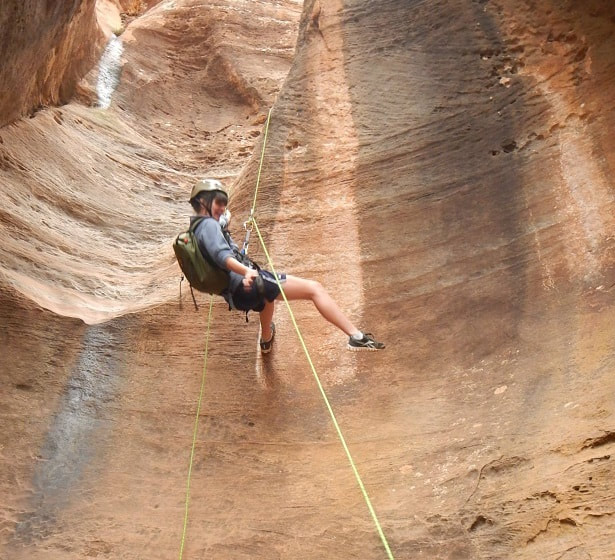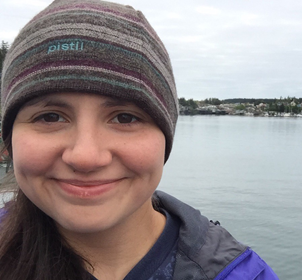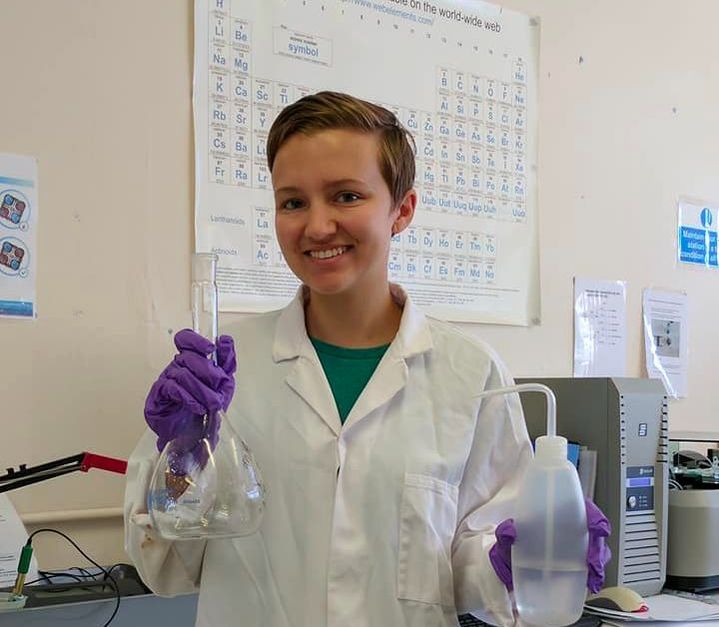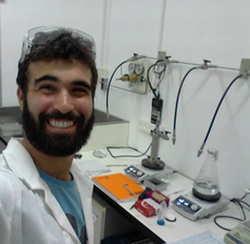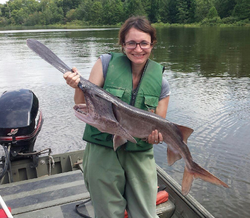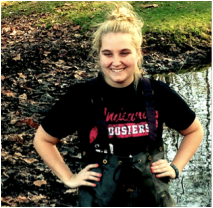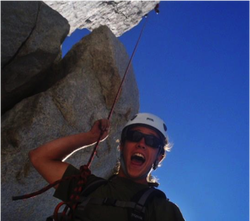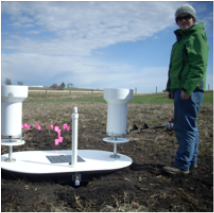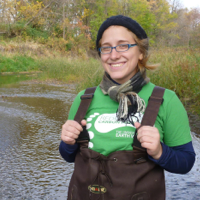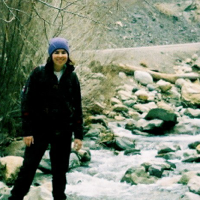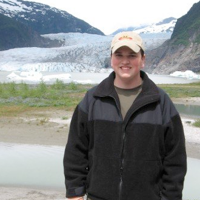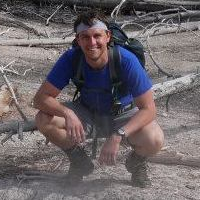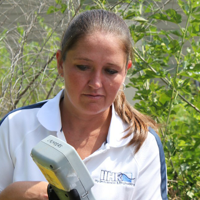Post-Doctoral Researchers
|
Pedro M. Avellaneda
B.S. Civil Engineering, National University of Colombia, 2000 M.S. Water Resources Engineering, National University of Colombia, 2003 Ph.D. Civil Engineering, University of New Hampshire, 2008 Pedro is studying intermittently flowing water in both intensively managed landscapes (e.g., tile drains, grassed waterways, ditches) and natural systems (e.g., ephemeral streams). He is interested in the spatial and temporal variability of nutrients in coupled surface-subsurface systems. Pedro is from Colombia and enjoys spending time with family and friends, running, and watched water flow. |
Graduate Students
|
Jase Hixson
B.S. Earth & Environmental Sciences, Indiana State University, 2012 M.S. Earth & Quaternary Systems, Indiana State University, 2015 Ph.D. Environmental Science, Indiana University, 2015-present Jase is studying the transport and fate of synthetic hormones and other emerging contaminants through streams, lakes, and wetlands. He uses a combination of field experiments, numerical modeling, and monitoring to study these processes across a range of physical systems. Jase is also a freshwater diatomist who focuses on tracking anthropogenic pollution. His M.S. research at Chain O’ Lakes State Park focused on determining the type, extent, and source of the pollution causing increased eutrophication throughout the park. |
|
Molly Cain
B.S. Geosciences, Penn State University, 2015 Ph.D. Environmental Science, Indiana University, 2015-present Molly’s research focuses on the transport and fate of heat and nutrients in intermittent streams, particularly responses to dynamic hydrologic events. Before joining the IU Watershed Hydrology and Engineering Group, she worked as an undergraduate research assistant at the Shale Hills Critical Zone Observatory and as an intern with NOAA’s National Geodetic Survey. After completing a Water Management Fulbright Fellowship at TU Delft (Netherlands) in the 2015-16 academic year, she will conduct her Ph.D. research at the Intensively Managed Landscapes Critical Zone Observatory. |
|
Tyler Balson
B.S. Chemistry, Marian University, 2011 B.S. Mathematics, Marian University, 2011 M.S. Environmental Science, Indiana University, 2015 Ph.D. Intelligent Systems Engineering, Indiana University, 2016-present Tyler is applying machine learning and other data analytics tools to optimize the placement of conservation practices in agricultural landscapes. His work leverages IU's High Performance Computing facility to conduct ensembles of agroecosystem simulations, analyze data, and forecast water quality and quantity futures for the agricultural Midwestern U.S. Tyler can often be found in a tree-stand or spending time with his family when not using a remote terminal to check his work. |
|
Paige Becker
B.S. Environmental Engineering, Colorado School of Mines, 2017 M.S. Hydrology, Colorado School of Mines, 2018 Ph.D. Environmental Science, Indiana University, 2018- present Paige studies how hydrologic exchange varies across different geologic settings in headwater mountain streams. Using a combination of numerical models and field tracer experiments, she hopes to establish a better understanding of hydrologic exchange fluxes and make predictions to inform our management of water resources. As a Colorado native, she grew up with a love for mountains and appreciation of finite water sources. Her research is based at the HJ Andrews Experimental Forest in the Cascades of Oregon, combining her passions for mountains and water. |
Undergraduate Students
Interested in joining us? Check out our openings.
Expatriates
|
Skuyler Herzog
B.S. Environmental Science, Washington State University, 2011 Ph.D. Hydrologic Science and Engineering, Colorado School of Mines, 2017 Skuyler advances basic science of stream-hyporheic exchange, and uses this to design stream restoration structures. He is a native of the Pacific Northwest where his applied projects emphasize management of water quality for salmon spawning. Last Known Whereabouts: Assistant Professor at Oregon State University - Cascades |
|
Danila Kourkoulin
B.S. Chemistry, Grace College, 2018 M.S.E.S., Water Resources, Indiana University, 2019-2022 Danila is studying solute transport and fate in intermittent and ephemeral streams. His research includes the development of novel, low-cost sensors and their use in studying natural and manipulated ecosystems. Last Known Whereabouts: Baxter International, Inc. |
|
Peter Francissen
B.A. Biology & Environmental Studies, Augustana College, 2018 M.P.A./M.S.E.S., Water Management, Indiana University, 2019-2021 Peter is researching the role of the hyporheic zone in the environmental fate of TFM. TFM is a pesticide used to suppress invasive sea lamprey, Petromyzon marinus, in the tributaries of Great Lakes ecosystems. He is interested in understanding the processes that control the fate and transport of this chemical, and how this can lead to smarter application. Outside of research, Peter enjoys kayaking, hiking, reading, and scuba diving. Last Known Whereabouts: US Army Corps of Engineers |
|
Landon Yoder B.A. History, Goshen College, 2004 M.P.A. School of Public and Environmental Affairs, Indiana University, 2013 Ph.D. Geography, Indiana University, 2017 Landon researches the role of farmer decision-making and collective action in shaping the adoption of on-farm conservation practices. He employs a combination of semi-structured interviews, statistical modeling, and spatial analysis to examine human and institutional dimensions of environmental change. His work has focused on the restoration of water quality in the Florida Everglades tied to regulation of south Florida's sugar industry and is currently exploring the role of Watershed Management Authorities in addressing nonpoint source pollution in Iowa. Last Known Whereabouts: Assistant Professor, Indiana University |
|
Riley Walsh
B.A. Biological Science/Political Science, SUNY Binghamton University, 2016 M.P.A./M.S.E.S Student, Environmental Management, Indiana University, 2017-2019 Riley’s research focuses on the Clean Water Act, and how laws, amendments, Supreme Court cases, and bureaucratic action have defined its jurisdiction. She is utilizing this information to spatially map the jurisdiction of the Act in Indiana at different points in time, in order to better understand the practical implications of modern rules that alter this scope. In her free time she listens to music, attends concerts, and climbs things. Last Known Whereabouts: Michigan Department of Environment, Great Lakes, and Energy |
|
Maya Rao
B.S. Environmental Science, International Studies Saint Louis University, 2013 M.P.A.-M.S.E.S., Water Management, 2016-2018 Maya is studying flow patterns and nutrient transport in intermittent streams. She is using summary statistics from previously collected data, and field investigation to expand current knowledge about the role intermittent streams play in the context of the larger landscape. |
|
Thomas Miller
B.A. Physics, DePauw University, 2016 M.P.A./M.S.E.S Student, Environmental Management, Indiana University, 2016-present Thomas' research involves modeling solute transport and storage characteristics under dynamic stream conditions. This involves field investigation and modeling in order to better understand solute movement within and between the channel and groundwater. Thomas has also worked in the Clean Lakes Program lab where he collected field samples and ran the auto analyzer. He is an Indiana native who spends his free time reading about urban design, playing board games, and canoe camping. He hopes to one day canoe across Indiana. Last Known Whereabouts: Michigan Department of Environment, Great Lakes, and Energy |
|
Samantha Starkey
B.S. Environmental Science, Indiana University 2014 - 2016 Samantha is currently volunteering in the study on how nitrogen fluctuates in response to storm events. This study is specialized in watersheds near agriculture. Samantha aims to see why these nitrogen fluctuations happen the way they do within these storm events. |
|
Melinda Miller
B.S. Environmental and Ecological Engineering, Purdue University, 2016 M.P.A./M.S.E.S. Student, Water Resources, Indiana University, 2016-2018 Melinda is developing a protocol to measure Extracellular Enzymatic Activity in stream sediments. She is using this protocol to help characterize a watershed in the H.J. Andrews Experimental Forest. Someday, she hopes to use her knowledge of science to come up with better environmental policies while working in a place like the Environmental Protection Agency. When not in the lab, Melinda enjoys learning languages, star-gazing, and teaching her dog open doors. Last Known Whereabouts: USEPA, Washington, DC |
|
Noah Schmadel
B.Sc. Environmental Engineering, Northern Arizona University, 2006 M.S. Civil and Environmental Engineering, Utah State University, 2009 Ph.D. Civil and Environmental Engineering, Utah State University, 2014 Post Doctoral Researcher, Indiana University, 2015 - 2017 Noah’s research interests are related to improving predictions of the fate and transport of pollutants and temperature in stream corridors. In particular, he investigates the level of field-based observations necessary to represent important transport controls across flows, streams, and watersheds. When not immersed in research, he enjoys growing peppers and tomatoes, making salsas, hiking, and snowboarding. Last Known Whereabouts: U.S. Geological Survey in Reston, VA |
|
Kerry Niel
B. Sc. Environmental Science, Wayne State University, 2013 M.S. Student, Environmental Science: Water Resources, Indiana University, 2014 - 2016 Kerry is studying nitrogen dynamics in stream-hyporheic systems in the agricultural Midwest. Her work focused on the assessment of spiraling or uptake rates using solute tracer injections. Major advances include assessment of the interactions between transport and transformation inferred from these studies. Last Known Whereabouts: Surface Water division at Ohio EPA |
|
Ari Feldman
B.S. Environmental Science, Indiana University 2013-2016 I study environmental science with a concentration in hydrology. I used to work as a hydrology research intern for the Zuckerberg Institute for Water Research where I studied pinhole defects in reverse osmosis membranes and their impact on the desalination process. I also used to work as an undergraduate teaching assistant for both Statistics and Environmental Science courses for the School of Public & Environmental Affairs at Indiana University. My current research focuses on how reach-scale studies of transport and fate in streams can be upscaled to make network-scale predictions. Last Known Whereabouts: Americorps Volunteer |
|
Amanda Nurre
B.A. Journalism, University of Cincinnati, 2010 M.P.A./M.S.E.S. Student, Water Management, Indiana University, 2014-present Amanda is studying flow patterns and learning modeling techniques to help characterize a watershed in the H.J. Andrews Experimental Forest. She is using field data to build and calibrate a model of stream hydraulics. In her free time, she loves art, reading, and being outdoors as much as possible. Last Known Whereabouts: Compliance Specialist at Commonwealth Engineers, Inc. |
|
Kristen Berger
B. Sc. Biology, University of Louisville, 2013 M.S. Student, Environmental Science: Water Resources, Indiana University, 2014 - 2016 Kristin is studying the transport and fate of solutes through stream-hyporheic systems. She researched the effects of varying discharge and streambed substrate on water movement and solute exchange with hyporheic zones in the H.J. Andrews Experimental Forest. |
|
Micky Leonard
B.Sc. Environmental Management, Indiana University, 2013 M.S. Student, Environmental Science: Water Resources, Indiana University, 2013 - present Micky’s research involves investigation of in stream nitrogen levels in watersheds in Eastern Iowa and their relationships with discharge, draught status, and storm events. With one to five years of nitrate concentration data from 30 monitoring sites this analysis hopes to identify significant trends in transport of this nutrient. When not concerning himself with the troubles of non-point source pollution Micky spends his time rock climbing and playing bass guitar. |
|
Kara Prior
B.Sc. Environmental Sciences, University of Iowa, 2009 B.A. International Studies, University of Iowa, 2009 M.S. Student, Geoscience, 2013 - 2015 Kara is a native Iowan who has traveled extensively. She has worked in China, South Korea, and most recently at the Iowa Flood Center where she managed a network of rain gauges and constructed stream stage sensors and rain gauge datalogger electronics. Kara studied how land-use decisions in agriculturally-dominated landscapes alter fluxes and stores of nitrogen, carbon, and water. When not managing a pesky network of ISCO samplers, Kara can usually be found haunting libraries, bookstores, or the baked goods section of a farmers’ market. Thesis Title: In-stream nitrogen processing and dilution in an agricultural stream network Last Known Whereabouts: Pursing Ph.D. with Todd Royer (Indiana University) |
|
Mary Weber
B.Sc. Geoscience, University of Iowa, 2013 M.S. Student, Geoscience, 2013-2015 Mary studied the sustainable management of groundwater in Mewat, India. Her research involved using a numerical model of groundwater flow and transport to simulate future scenarios based on climate change, infrastructure, and individual water use decisions. Modeling work was in support of management activities by the Institute of Rural Research and Development. Thesis Title: Modeling groundwater quality in an arid agricultural environment in the face of an uncertain climate: the case of Mewat District, India Last Known Whereabouts: Hydrogeologic modeler at INTERA |
|
Colleen Brehm
B.Sc. Civil Engineering, University of Iowa, 2014 Colleen simulated the transport and fate of steroidal hormones in the environment, presenting work at several venues and participating in research publications with the team. Last Known Whereabouts: Colleen is living in Seattle, WA, working as a Business & Engineering Strategy Analyst for the Policy Analysis Team within the Environmental, Health & Safety organization at Boeing. She tracks and monitors environmental management systems, processes, programs, and laws and regulations concerning company operations and in relation to a variety of media – air, water, chemicals, nanotechnology, and safety & health. Through engineering data analysis, interaction with regulatory agencies, and technical expertise, she assesses the impact of emerging issues, legislation, and regulations to help inform Boeing site engineers, scientists, and managers of new and pending requirements. She also supports her team in advocacy efforts for emerging regulatory and occupational safety issues. |
|
Joe Cullin
B.Sc. Environmental Science (Hydroscience), University of Iowa, 2011 M.S. Geoscience, University of Iowa, 2014 Joe’s research developed and validated a conceptual model for predicting the transport and fate of contaminants using field solute tracer studies couples with laboratory experiments Thesis Title: Reach-scale Predictions of the Fate and Transport of Contaminants of Emerging Concern at Fourmile Creek in Ankeny, Iowa. Last Known Whereabouts: Pursuing Ph.D. with Jay Zarnetske at Michigan State University |
|
Matt Even
B.Sc., Geology, B.A. Physics, & B.A. Environmental Science, University of Northern Iowa, 2012 M.S. Geoscience, University of Iowa, 2014 Matt’s research quantified the role of groundwater as a primary control on the evolution of soil profiles and on vegetation patterning at the Ciha Fen. Thesis Title: How does groundwater subsidy of vegetation change as a function of landscape position and soil profile characteristics at the Ciha Fen (Johnson County, IA, USA)? Last Known Whereabouts: Wetlands Specialist, Illinois Geological Survey & Prairie Research Institute |
|
Sam Smidt
B.Sc. Environmental Science, Olivet Nazerene University, 2012 M.S. Geoscience, University of Iowa, 2014 Sam’s research compared hyporheic exchange at a stream restoration structure to that of a nearby natural riffle. Thesis Title: A Comparison OF Hyporheic Transport at a Constructed Stream Restoration Structure and Natural Riffle Feature, West Branch Owego Creek, New York, USA Last Known Whereabouts: Pursuing Ph.D. with Dave Hydnman at Michigan State University. |
|
Caroline Davis, Ph.D.
B.Sc. Geology, Iowa State University M.S Geology, Fort Hays State University Ph.D. Geology and Geophysics, University of Missouri-Rolla Postdoctoral Researcher, University of Iowa, 2011 - 2013 Carrie worked at the LACMRERS facility (IIHR-Hydrosicence and Engineering), studying transport and fate of nutrients across agricultural watersheds. See Carrie describe more about her work here. Last Known Whereabouts: Research Scientist at IIHR-Hydroscience & Engineering |
|
Cheryl Smith
B.Sc. Environmental Science (Hydroscience), University of Iowa, 2012 Cheryl studied transport of solute tracers in stream networks. Her research included analysis of several estimates of parameter uncertainty (local, global, and fuzzy metrics). When not following streams to their headwaters, Cheryl can be found horseback riding, camping, or delving into a good book. Last Known Whereabouts: Environmental Lab Technician, US Forest Service, Northern Research Station |
